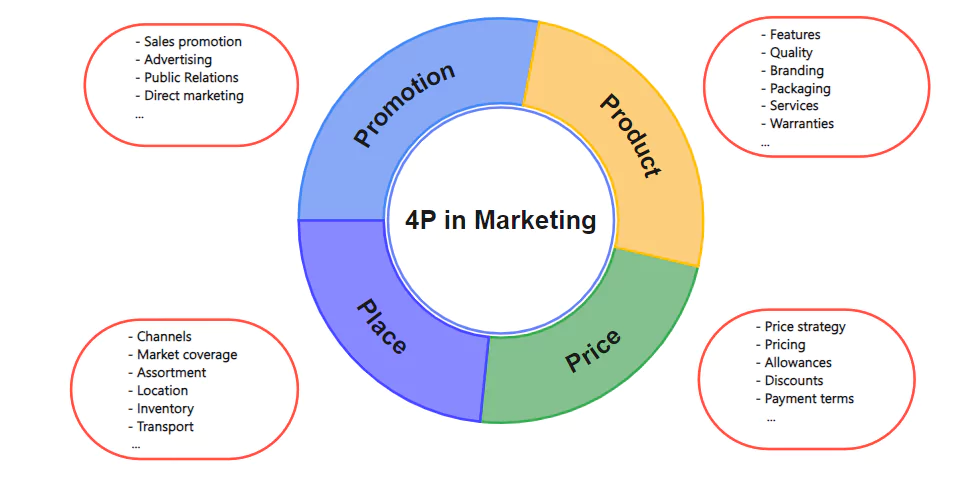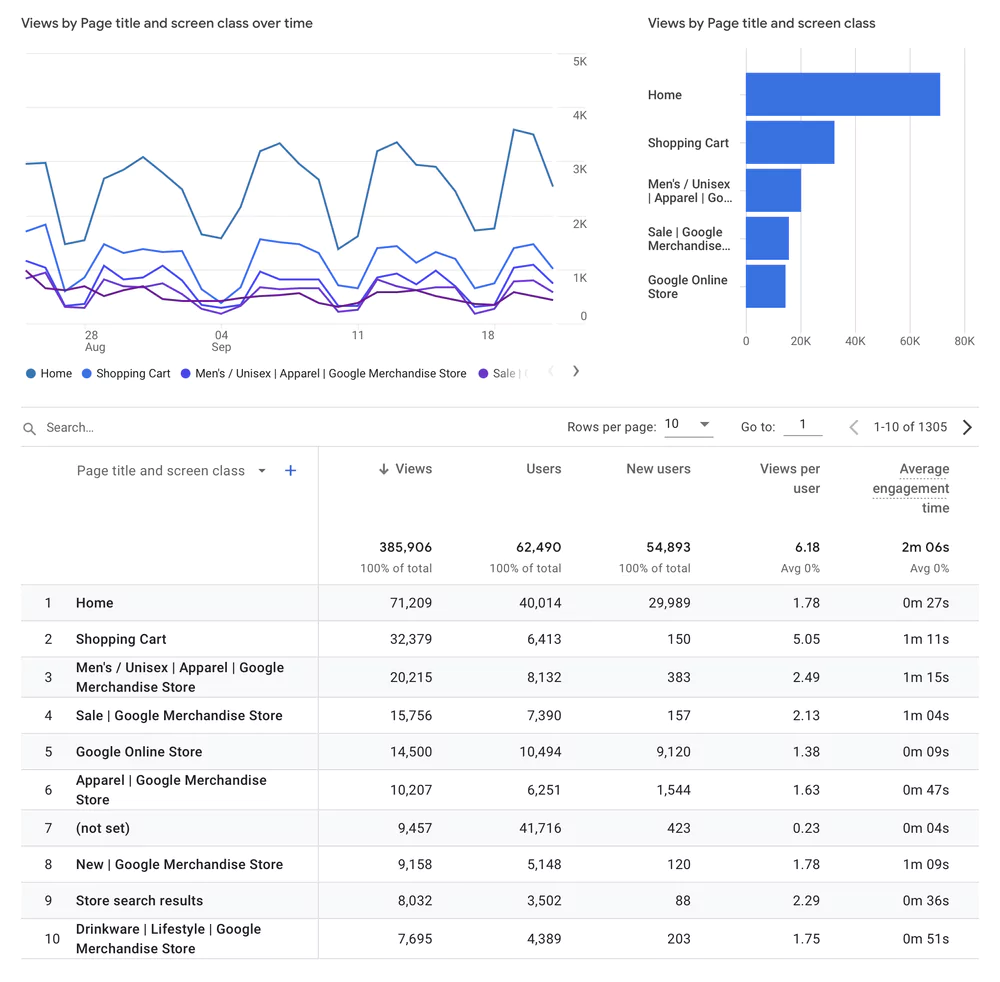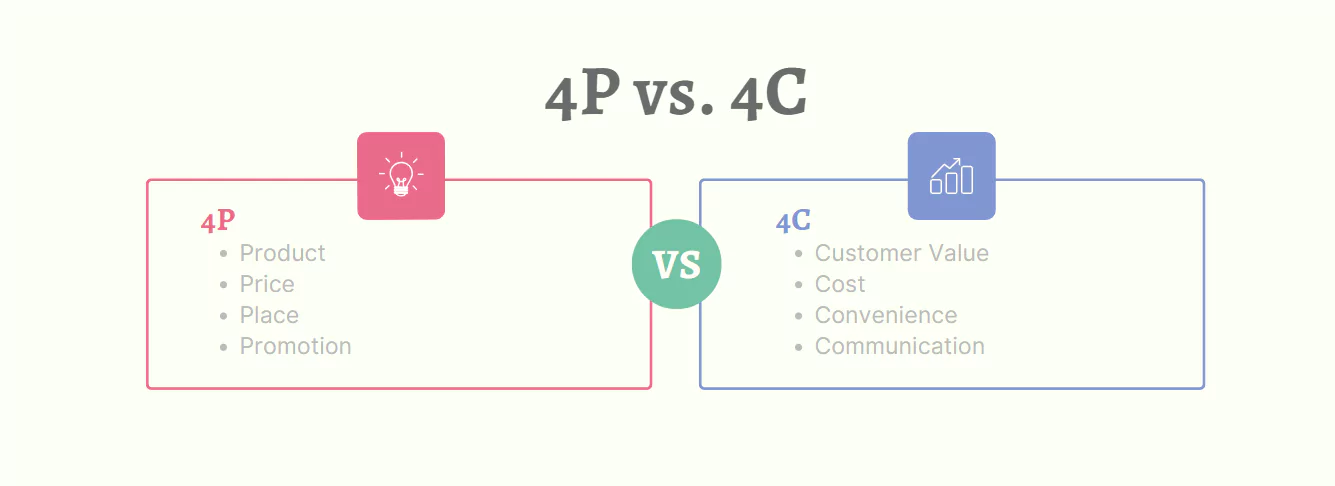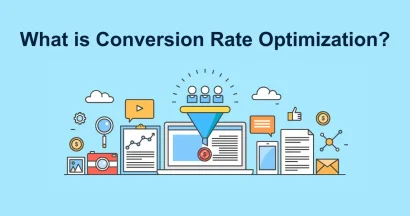Welcome to the exciting world of marketing, where the power of the 4P in Marketing reigns supreme. Set off on a transforming adventure to learn the secrets of effective brand strategies, captivating marketing, and unrivaled market supremacy.
Through this insightful investigation, you will learn how these four pillars work together to produce a symphony of customer happiness, business development, and unbeatable competitive advantage.
What is 4P in marketing?
The Four Ps of Marketing, which are the essential components of a marketing mix, are referred to as the 4Ps in marketing. The Four Ps stand for the crucial areas that a marketer should take into account while creating and putting into practice a digital marketing plan.
| 4Ps | Meaning |
| Products | Products refer to the tangible or intangible items or services offered by a business to its clients. This includes features, branding, packaging, quality, and product design choices. |
| Price | Price is the amount of money that consumers are ready to pay for a product or service. It’s crucial to consider factors like production costs, market demand, competition, and perceived value when deciding on the right pricing. |
| Place | Place refers to the strategies used to make a product or service available to the target market. It involves selecting and overseeing distribution networks, managing logistics, controlling inventory, warehousing, and transportation. |
| Promotion | Promotion encompasses all activities aimed at informing and marketing the product to the target market. It uses advertising, personal selling, public relations, sales promotion, and various communication methods to increase awareness, generate interest, and encourage product purchases. |
4Ps Marketing Checklist: Remember & Implement
To maximize the impact of 4P in Marketing, you must utilize its essential values. To do so, you must ask and answer questions about your business centered on 4P in Marketing. Here is a general checklist that may be used by firms in a variety of sectors:
| 4P | Checklist of 4P in Marketing |
| Product | 1. Have you described your products or services well, highlighting their features, benefits, and unique selling points? 2. Does what you offer fulfill a need or solve a problem for your target audience? 3. Have you researched the industry to understand customer preferences and ensure your product meets their needs? 4. Are you consistently checking customer feedback and market trends to enhance your product? |
| Price | 1. Did you research pricing to understand market trends and competitors’ pricing strategies? 2. Have you set prices for your products/services that are fair and profitable? 3. When determining your price, did you consider factors like production costs, the value provided, and what customers are willing to pay? 4. Are you offering different pricing levels or package deals to cater to different types of customers or preferences? |
| Place | 1. Have you found the best ways to reach your target customers? 2. Can people easily get your products or services online or in stores? 3. Have you partnered with other businesses to reach more customers? 4. Have you improved how you deliver products to make it faster and more efficient? |
| Promotion | 1. Did you make a detailed plan to market and sell your products or services? 2. Have you figured out the best ways to reach the people you want to sell to? 3. Can you clearly describe why your products or services are valuable and their benefits? 4. Do you check how well your marketing is working and make changes based on data? |
In addition, there are many places that provide you with free templates to design a 4P marketing model. You can use them to make your 4P plan look more professional and beautiful. ThimPress recommends you use the free templates on the following 2 websites; it’s free and convenient:
- Edrawmind 4Ps of Marketing – Free Template
- Just Free Sliders – Free Marketing Mix 4Ps PowerPoint Template
Below is an image we used the template from Edrawmind to design:

4Ps Marketing Effectiveness Indicators
No matter the model chosen, measuring performance and applying the results to the next campaign is essential. This holds true for 4P marketing as well. Evaluating the model’s effectiveness is necessary. Consider these metrics when implementing the 4P model:
| 4P | Indicators of 4P in Marketing |
| Product | 1. Sales volume: Total items sold in a specific period. 2. Revenue: Overall income from product sales. 3. Customer satisfaction: Measure opinions through surveys or ratings. 4. Product Adoption Rate: Track how quickly customers embrace and use your product. |
| Price | 1. Profit Margin: Calculate the difference between selling price and manufacturing cost to gauge product profitability. 2. Average Transaction Value: Determine the typical amount customers spend per transaction. 3. Price Elasticity: Assess how price changes impact demand for your products. 4. Price Comparison with Competitors: Monitor and compare your prices with those of competitors. |
| Place | 1. Distribution Reach: Count the sites or channels where your product is available. 2. Channel Performance: Evaluate the effectiveness and financial success of different distribution methods. 3. Time to Market: Measure the duration from production to product availability in the market. 4. Stock Turnover Rate: Calculate how quickly inventory is sold and restocked. |
| Promotion | 1. Reach: Measure the number of people exposed to your marketing efforts. 2. Conversion Rate: Track the percentage of potential customers who take a desired action, like making a purchase or subscribing. 3. Return on Investment (ROI): Calculate the effectiveness of your promotional investments. 4. Brand Awareness: Assess how well your brand is recognized and understood by your target audience. |
Tools for Tracking 4Ps Marketing Indicators
The difficulty lies in measuring the 4P in Marketing, for which you’re familiar with the KPIs. Here are tools commonly utilized by organizations employing the 4P model:
| Tools | Description | Pricing |
| Google Analytics | Google Analytics monitors website activity, including session duration, pages per session, visitor bounce rates, and traffic sources. It’s compatible with Google Ads, enabling users to create and assess online campaigns by analyzing landing page quality and conversions. | Free. |
| Google Search Console | Google Search Console supports the 4Ps by providing insights into customer behavior, market competition, website visibility, and the effectiveness of promotional elements in search results. This information is crucial for refining marketing strategies and optimizing your online presence. | Free. |
| CRM (Customer Relationship Management) Software | Applications like HubSpot, Salesforce, Freshsales, and Zoho CRM help manage customer data, track sales, and monitor customer satisfaction. | $25 – $100/month Depending on the plan. |
| E-commerce Platforms | If you want to offer items or services online, platforms like WordPress, Shopify, WooCommerce, or Magento have analytics built in. | $25 – $400/month Depending on the plan. |
| Social media analytics | Facebook, X (formerly known as Twitter), and Instagram have built-in analytics offering insights on reach, engagement, and demographics. | Free; Pay for advertising. |
| Email Marketing Platforms | Email marketing platforms such as Mailchimp and Constant Contact offer analytics and reporting services to measure email open rates, click-through rates, and campaign conversion rates. | $12 – $350/month Depending on the plan. |
| Survey and Feedback Tools | Jotform Survey Maker, SurveyMonkey, Google Forms, and Typeform help create surveys to gather consumer feedback, satisfaction levels, and product preferences. | Google Forms is free. Other tools are $25–$100/month, depending on the plan. |
| Heatmap & User Behavior Analytics | Heatmap tools like Hotjar and Crazy Egg can help you understand user behavior on your website, including click patterns, scroll depth, and areas of interest. | $39 – $389/month depending on the plan. |
Selecting tools and plugins should align with your goals, budget, and system capabilities. Consider the metrics you aim to track and choose a user-friendly interface for your data analysis and reporting needs.
Both Google Analytics and Google Search Console are fundamental tools for analyzing website metrics. They not only complement each other but also integrate effectively with other measurement tools. Their free accessibility makes them invaluable resources for any marketing strategy, including the application of the 4Ps of marketing.

Combining the 4Ps of marketing with the AIDA model
Using just one marketing model can leave some gaps and uncertainty in how you approach things. Marketing experts often mix different marketing models to cover up any missing parts they planned for. One of the most useful models to combine with the 4Ps is the AIDA model.

Let’s have a look at some ThimPress-based methods for combining the 4Ps of marketing with the AIDA model:
| Attention (AIDA) + Product (4Ps) | 1. Make attention-grabbing plans to make more people aware of your product. 2. Show what makes your product special and its benefits to attract the people you want to reach. 3. Make sure your product stands out from competitors and fits well in the market. |
| Interest (AIDA) + Price (4Ps) | 1. Make people interested in your product by explaining its value and good price compared to others. 2. To get people curious, show how affordable and cost-effective your product is. 3. Attract possible buyers by showcasing special offers, discounts, or different prices they can choose from. |
| Desire (AIDA) + Place (4Ps) | 1. Get people wanting your product by highlighting that it’s easy to find and get. 2. Make sure your product is available in many places and can be bought in different ways. 3. To make customers want it more, offer easy ways to buy and a simple process for purchasing. |
| Action (AIDA) + Promotion (4Ps) | 1. Use clear instructions in your ads to make people take action. 2. Offer quick incentives like limited-time deals or special offers to make people act fast. 3. Use good advertising places to get more people to buy and do what you want them to do. |
Integrating the 4Ps with the AIDA model allows you to strategically address each step of the customer journey. This connection helps capture attention, spark interest, evoke desire, and prompt action, all while considering the product, price, place, and promotion elements.
Combining the 4Ps in marketing with the 4Cs in marketing
The primary goal of any business is to attract attention and sell items, as it directly impacts sales and revenue. However, beyond sales, what follows? When a product has flaws or if customers are dissatisfied, it can harm the company’s reputation. This led marketing professionals to develop the concept of the 4Cs in marketing, which corresponds to the 4Ps in marketing.

Let’s look at the primary sections when these two models are combined:
| Product (4Ps) + Customer Value (4Cs) | 1. Concentrate on developing items that offer outstanding value to clients. 2. Understand your customers’ wants and preferences in order to create items that meet their expectations. 3. To explain the worth of your product to clients, highlight its distinct value proposition and benefits. |
| Price (4Ps) + Cost (4Cs) | 1. Consider the cost from the standpoint of the consumer. 2. Make sure your price plan corresponds to the product’s perceived worth. 3. Customers should be informed about your product’s cost-effectiveness and affordability. |
| Place (4Ps) + Convenience (4Cs) | 1. Customers should be able to obtain your goods through methods that are convenient and easy to use. 2. Optimize your distribution methods so that clients may easily buy and get your product. 3. Provide clients with several ways to access the goods, such as online platforms, retail locations, or direct delivery. |
| Promotion (4Ps) and Communication (4Cs) | 1. Shift the emphasis from traditional advertising efforts to successful customer communication. 2. Build relationships and understand client demands through engaging in two-way conversations. 3. Interact with consumers and deliver useful information through multiple communication channels, such as social media, email marketing, and customer support. |
This connection of 4Ps vs. 4Cs in marketing helps you understand your customers more, offer good prices, make things easy to get, and talk efficiently.
Conclusion
You may get a quick overview of using and measuring the 4P In Marketing in this article. Combining the 4Ps with models like AIDA and 4C helps create a strategy focusing more on customers. Thanks for reading. Good luck with your marketing!
Read More: 7Ps of Marketing: What Are They and How To Use Them?
Contact US | ThimPress:
Website: https://thimpress.com/
Fanpage: https://www.facebook.com/ThimPress
YouTube: https://www.youtube.com/c/ThimPressDesign
Twitter (X): https://twitter.com/thimpress


